
Central Java is a province of Indonesia, located in the middle of the island of Java. Its administrative capital is Semarang. It is bordered by West Java in the west, the Indian Ocean and the Special Region of Yogyakarta in the south, East Java in the east, and the Java Sea in the north. It has a total area of 34,337.48 km2, with a population of 36,516,035 at the 2020 Census making it the third-most populous province in both Java and Indonesia after West Java and East Java. The official estimate as at mid 2022 was 37,032,410. The province also includes a number of offshore islands, including the island of Nusakambangan in the south, and the Karimun Jawa Islands in the Java Sea.

Prince Diponegoro, also known as Dipanegara, was a Javanese prince who opposed the Dutch colonial rule. The eldest son of the Yogyakartan Sultan Hamengkubuwono III, he played an important role in the Java War between 1825 and 1830. After his defeat and capture, he was exiled to Makassar, where he died, 69 years old.
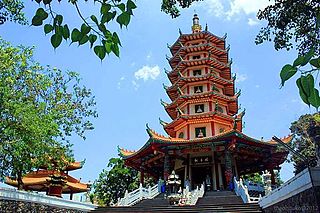
Semarang is the capital and largest city of Central Java province in Indonesia. It was a major port during the Dutch colonial era, and is still an important regional center and port today. The city has been named as the cleanest tourist destination in Southeast Asia by the ASEAN Clean Tourist City Standard (ACTCS) for 2020–2022.

The Sultanate of Mataram was the last major independent Javanese kingdom on the island of Java before it was colonised by the Dutch. It was the dominant political force radiating from the interior of Central Java from the late 16th century until the beginning of the 18th century.

Magelang is one of six cities in Central Java that are administratively independent of the regencies in which they lie geographically. Each of these cities is governed by a mayor rather than a bupati. Magelang city covers an area of 18.54 km2 and has a population of 118,227 at the 2010 census and 121,526 at the 2020 census; the official estimate as at mid 2022 was 121,675. It is located in the middle of the Magelang Regency, between Mount Merbabu and Mount Sumbing in Central Java Province, Indonesia, and lies 43 km north of Yogyakarta, 15 km north of Mungkid and 75 km south of Semarang, the capital of Central Java.
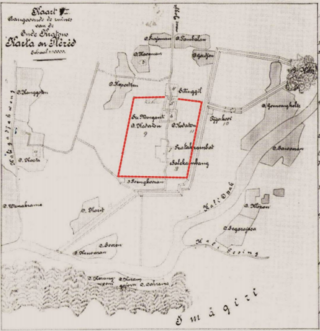
Plered was the location of the palace of Amangkurat I of Mataram (1645–1677). Amangkurat moved the capital there from the nearby Karta in 1647. During the Trunajaya rebellion, the capital was occupied and sacked by the rebels, and Amangkurat died during the retreat from the capital. His son and successor Amangkurat II later moved the capital to Kartasura. It was twice occupied by Diponegoro, during the Java War (1825–1830) between his forces and the Dutch. The Dutch assaulted the walled complex in June 1826, which was Diponegoro's first major defeat in the war.
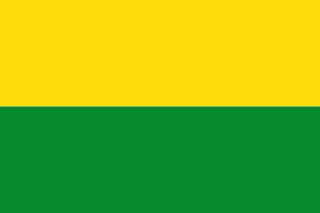
The Duchy of Pakualaman is a minor Javanese princely state within the Sultanate of Yogyakarta. It was created in 1812 when Natakusuma was rewarded for helping the British quell the conflict in Yogyakarta in June 1812. It became the mirror-image of Mangkunegaran in the territory of the Surakarta Sunanate.

Ambarawa is a town located between the city of Semarang and Salatiga in Central Java, Indonesia. Administratively, it is bordered by the districts of Banyubiru to the south, Jambu to the west, Bandungan to the north, and Bawen to the east.
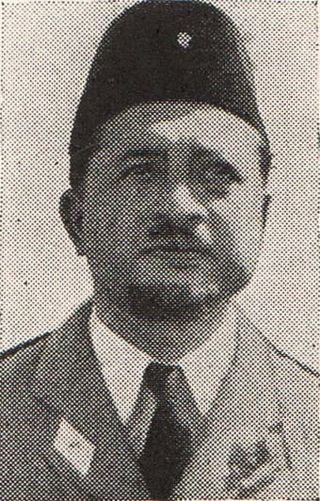
General Gatot Soebroto was an Indonesian general who began his military career with the Royal Dutch East Indies Army (KNIL) and rose to be deputy Army chief-of-staff.

The Ambarawa Railway Museum is a museum located in Ambarawa in Central Java, Indonesia. The museum preserves around 21 steam locomotives and focusing on tourism train tour hauled by 3 operational steam engines and a hydraulic diesel engine, using the remains of the closing of the 3 ft 6 in (1,067 mm) railway line.
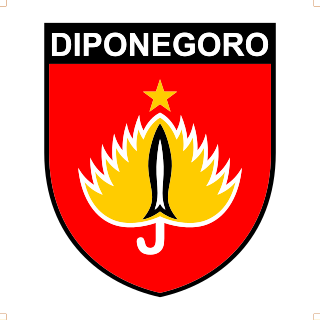
KODAM IV/Diponegoro or IV Military Regional Command/Diponegoro is a military area command of the Indonesian Army. It covers the provinces of Central Java and Special Region of Yogyakarta on the island of Java. It is named after the Java War hero Prince Diponegoro. It appears to have been first established in 1950, and inherited the heritage of the former 3rd Diponegoro Division and other Central Java infantry units. Diponegoro Division personnel have been very significant in the history of the Indonesian Army. Among its early officers were Sarwo Edhie Wibowo, who served as battalion and regimental commander in the division from 1945-53. Former commanders of the division include Soeharto, a former president of Indonesia. Divisional personnel, including Lieutenant Colonel Untung Syamsuri, were involved in the 30 September Movement events of 1965. Former president Susilo Bambang Yudhoyono was also member of this KODAM when he took command of KOREM 072/Pamungkas at Yogyakarta during his military tenure.
Ungaran is a town in Central Java, Indonesia and the administrative centre of the Semarang Regency in the province of Central Java. Ungaran is located at -7° 8' 17", 110° 24' 18" at an elevation of 319 metres. It encompasses two districts (kecamatan) within the Regency - Ungaran Barat and Ungaran Timur.

Surakarta Sunanate is a Javanese monarchy centred in the city of Surakarta, in the province of Central Java, Indonesia.
The Java War of 1741 to 1743 was an armed struggle by a joint Chinese and Javanese army against the Dutch East India Company and pro-Dutch Javanese that took place in central and eastern Java. Ending in victory for the Dutch, the war led to the fall of the Sultanate of Mataram and, indirectly, the founding of both the Sunanate of Surakarta and the Sultanate of Yogyakarta.

The Naamlooze Vennootschap.Nederlandsch-Indische Spoorweg Maatschappij, abbreviated to NIS, NISM or N.V. NISM was a private-owned railways company in charge of rail transport in Java, Dutch East Indies. The company's headquarters were in Semarang, Central Java. The company started its maiden route from Semarang to Vorstenlanden and in 1873 they also built their line to the Willem I Railway Station of Ambarawa–Kedungjati and Batavia–Buitenzorg lines. Later the network expanded to Bandung and Surabaya. It was absorbed into the present Kereta Api Indonesia after Indonesian independence in 1945. It was the main competitor to Staatsspoorwegen as state-owned railway company and established on April 6, 1875.

Fort Vastenburg, also Fort Surakarta, is an 18th-century Dutch fort located in Gladak, Surakarta, Central Java, Indonesia. A landmark of Surakarta, the fort faces polemics related with multiple owners claiming different parts of the fort. As a result, the fort remains abandoned and threatened to be demolished by various private parties claiming the fort's ownership.

Fort Willem I, known in Indonesian/Javanese as Benteng Pendem Ambarawa, is a 19th-century Dutch fortress in Ambarawa, Central Java, Indonesia.

Paku Alam X is the Duke (Adipati) of Pakualaman, a small Javanese duchy in the Special Region of Yogyakarta, Indonesia. He succeeded as Paku Alam upon the death of the previous ruler, his father Paku Alam IX, who died on 21 November 2015. He was formally crowned with the Royal Javanese title of Kanjeng Gusti Pangeran Adipati Arya (KGPAA) Paku Alam X on 7 January 2016, and as stated in the National Constitution, on 25 May 2016, He was sworn and appointed as the hereditary Vice-Governor of Yogyakarta Special Region.
Amangkurat III was a short-lived susuhunan (ruler) of the Sultanate of Mataram, who reigned 1703–1705.

Fort van den Bosch, locally known as Benteng Pendem, is a fort located in Pelem administrative village, Ngawi (town), Ngawi Regency, Indonesia.


















